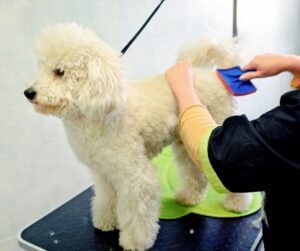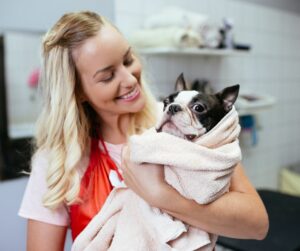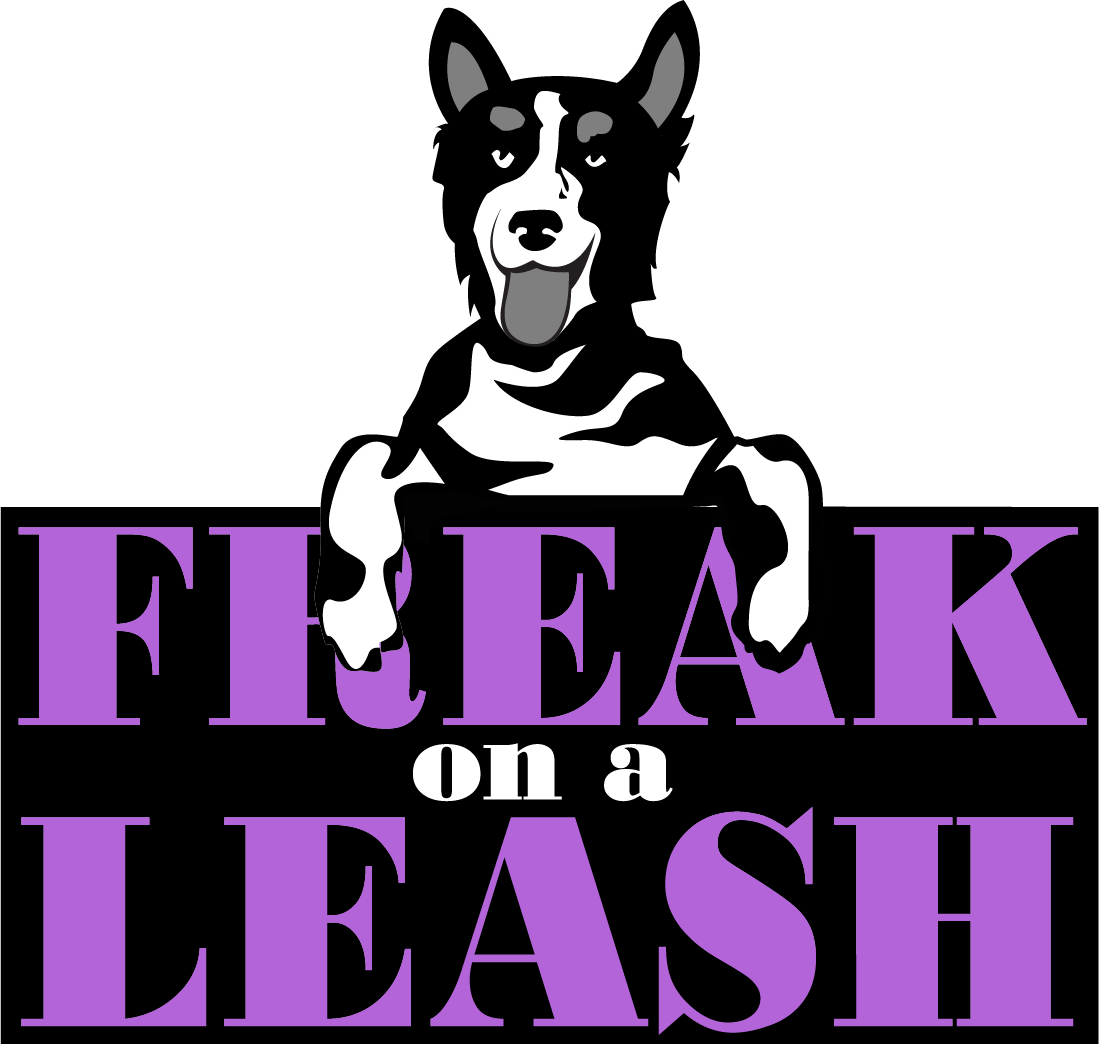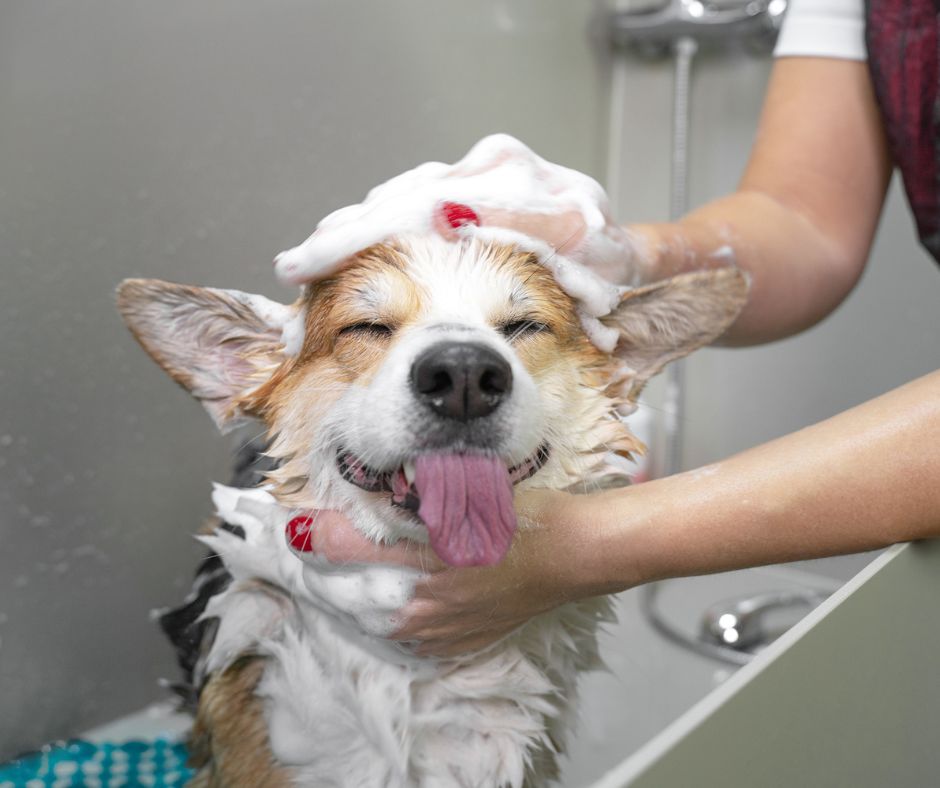Grooming your dog is not just about making them look good, it is also vital for their overall health and wellbeing. However, grooming can sometimes be a daunting task, especially if your dog is anxious or fearful of the process. But don’t worry, we’re here to help! In this blog post, we will cover everything you need to know about grooming your dog, from understanding their grooming needs to recognizing signs of anxiety and techniques to calm them down. We will also discuss how to make grooming a positive experience for your pup with reward-based approaches and gradual introductions to grooming tools. Plus, we’ll explore when it’s best to consider professional help and explore mobile groomers and their pros and cons. Let’s get started on this grooming journey together!
 Understanding Your Dog’s Grooming Needs
Understanding Your Dog’s Grooming Needs
Proper grooming is part of the overall health and well-being of your pup. Regular grooming sessions help prevent matting, tangles, and skin problems. It’s important to understand that different dogs have different grooming needs, depending on factors like breed, coat type, and activity level. A thorough grooming session should include brushing, nail trimming, ear cleaning, and bathing. If you’re unsure about your dog’s specific grooming needs, it’s always a good idea to consult a professional groomer or your veterinarian for guidance. By giving your canine companion the attention and care they need, you can ensure they have a happy and healthy grooming experience.
Importance of Regular Grooming
Regular grooming for your dog helps maintain a healthy skin and coat. By removing dead hair and distributing natural oils, regular grooming promotes optimal skin health. Additionally, it helps prevent unpleasant odors and keeps your dog clean and fresh. Another benefit of regular grooming is the opportunity to check for any signs of skin issues, lumps, or irritations that may require veterinary attention. Frequent brushing reduces shedding and minimizes the presence of allergens in your home. Beyond the physical benefits, grooming sessions also provide valuable bonding time between you and your dog, strengthening your relationship.
 Recognizing the Signs of Grooming Anxiety in Dogs
Recognizing the Signs of Grooming Anxiety in Dogs
Recognizing the signs of grooming anxiety in dogs is critical for their well-being. Pay close attention to your pup’s body language during grooming sessions. Trembling, panting, or hiding could indicate anxiety. Excessive barking, growling, or aggression can also be signs of stress. Some dogs show avoidance behaviors such as trying to escape or resisting handling. Watch out for discomfort or pain, such as sensitivity in specific areas or reluctance to have certain body parts touched. If you notice any signs of grooming anxiety, it’s a good idea to consult a professional groomer or vet for guidance.
Identifying Triggers and Causes of Anxiety
Loud noises, unfamiliar environments, or past traumatic experiences can trigger anxiety in dogs during grooming sessions. Dogs with sensitive areas, like their paws or ears, may also be more prone to experiencing stress during grooming. Additionally, a lack of proper socialization or positive grooming experiences can contribute to anxiety. It’s important to note that some dogs may have underlying health conditions that make grooming uncomfortable or painful for them. By identifying the specific triggers and causes of anxiety, you can effectively address and alleviate these issues.
Techniques to Calm Your Dog for Grooming
To calm your dog for grooming, there are various techniques you can utilize. Gradual desensitization and counterconditioning techniques are effective in reducing grooming anxiety over time. Start by introducing grooming tools gradually, keeping the sessions short and positive. Reward your dog’s calm behavior with treats or praise to reinforce positive associations with grooming. Create a secure and comfortable environment, minimizing distractions and loud noises. If necessary, seek guidance from a professional trainer or behaviorist for specialized calming techniques. Remember, patience and consistency go a long way in helping your pup feel at ease during grooming sessions.
The Role of Exercise in Easing Grooming Anxiety
Regular exercise can be helpful in easing grooming anxiety in dogs. By engaging in physical activity, such as going for a walk or having playtime, you can help release your dog’s excess energy and promote relaxation. This tiredness can significantly reduce their anxiety levels during grooming sessions. Additionally, exercise stimulates the production of endorphins, which are natural mood boosters, helping your dog feel more at ease. It is also beneficial to combine exercise with positive reinforcement techniques during grooming, to ensure a positive association with the grooming process as previously discussed. Remember to consult your veterinarian if you have questions or concerns regarding appropriate exercise based on your dog’s age, breed, and health condition.
How to Make Grooming a Positive Experience for Your Dog?
Introduce grooming tools and sessions gradually, allowing your dog to feel at ease. Reward good behavior with treats, praise, or toys. Create a calm atmosphere with soothing music or aromatherapy. Take breaks to prevent overwhelm. Show love and affection after each session for a positive experience.
 Gradual Introduction to Grooming Tools and Sessions
Gradual Introduction to Grooming Tools and Sessions
To ensure a positive grooming experience for your pup, it’s best to introduce grooming tools and sessions gradually. Start by allowing your dog to sniff and examine each tool before using it. Begin with shorter grooming sessions, just a few minutes can be plenty, gradually increasing the duration as your dog becomes more comfortable. Remember to pair the introduction of each grooming tool with positive reinforcement, such as treats or praise. When handling sensitive areas like paws and ears, be gentle and reward calm behavior. Take your time, be patient, and allow your dog to adjust to each new tool and grooming activity.
Reward-Based Approach for Successful Grooming
Utilizing a reward-based approach is key to your dog’s success and enjoyment of the grooming process. Positive reinforcement techniques are most effective in encouraging desired behaviors during grooming sessions. By offering treats or praise when your dog remains calm, sits still, or allows handling without resistance, you can create a positive association with the grooming experience. It is also helpful to break down grooming tasks into smaller steps and reward progress along the way. Avoid using punishment or negative reinforcement, as this can increase anxiety and make grooming a more stressful experience for your canine companion. A reward-based approach will make grooming a pleasant and enjoyable activity for both you and your best friend.
Celebrating Small Wins: Encouraging Positive Behaviors
By acknowledging and praising even the smallest improvements, you can make grooming a positive experience for your pup. Celebrate milestones such as allowing nail trimming without resistance or staying calm during bathing. Naming the parts of your pup’s body while grooming them can help ease anxiety and give add predictability to the process. Reward positive behaviors immediately to reinforce the connection between the behavior and the reward. Training cooperative care or care with consent makes your pup an active participant that can chose to opt in and out of grooming procedures. This can be a game changer in helping fearful and anxious pups and bring out a level of confidence in your dog you didn’t know could be achieved.
Professional Help: When to Consider a Mobile Groomer
When it comes to grooming your dog, there are times when professional help may be necessary. That’s where mobile groomers come in. Mobile groomers often have the flexibility to tailor the grooming experience to suit your dog’s specific needs. They provide convenience and timesaving by coming to your doorstep, eliminating the need for travel. For anxious dogs, mobile grooming offers a more relaxed environment, reducing stress and anxiety. Additionally, mobile grooming provides personalized attention as the groomer typically works with one client at a time, giving your dog their undivided focus. Mobile grooming can be especially beneficial for dogs who may find a traditional grooming salon stressful, are scared of other dogs, or are fearful of new or busy places.
 Mobile grooming also caters well to mobility-challenged pet owners who may have difficulty getting to a salon. However, there are some drawbacks to consider. Mobile groomers can also be more expensive than traditional grooming, and availability may be limited in some areas. Scheduling well in advance may be required.
Mobile grooming also caters well to mobility-challenged pet owners who may have difficulty getting to a salon. However, there are some drawbacks to consider. Mobile groomers can also be more expensive than traditional grooming, and availability may be limited in some areas. Scheduling well in advance may be required.
Conclusion
In conclusion, grooming your dog is not just about aesthetics but also about their overall health and well-being. Regular grooming helps prevent matting, skin infections, and other issues that can arise from neglecting their coat and hygiene. It is important to pay attention to your dog’s behavior and recognize signs of grooming anxiety. By understanding their triggers and causes of anxiety, you can implement techniques to calm them during grooming sessions. Make grooming a positive experience by gradually introducing tools at home and rewarding good behavior. If you find it challenging to groom your dog at home, however, consider seeking professional help from a mobile groomer who can provide convenient and stress-free grooming services. Your furry friend will thank you for the care and love you show them through regular grooming.

